Part I: The Einstein-Serbu Correspondence
One of the best-known modern Romanian historians, Nicolae Iorga, has the distinction of being one of the few scholars of his day or before to document the lives of educated Romanian women [See “Ce carte invlitau odatli fcmeile le noi” (“Women’s Education in the Past”), Floarea Darurilor, An I, No. 3 (1907) 129-45, and Femeile în viaţa neamuluĭ nostru: chipurĭ, datine, fapte, mărturiĭ (Women in Romanian History—Portraits, Traditions, Testimonies), (Văleniĭ-de-Munte: Tipografia “Neamul Românesc,” 1911)], since the dominant view held that the role of a woman was to build a family rather than cultivate an intellectual life. A lesser-known iconoclastic Romanian was Melanie Serbu, born in 1909 in Tulgheş (near Brasov, Romania), who, as a young woman with only vocational education, struck up a 20-year correspondence with one of the most important intellects of the twentieth century: Albert Einstein. The 20 original letters from Einstein to Serbu, together with the over 80 manuscript pages of Serbu’s later reflections on each letter, are being offered at Swann’s October 26, 2023, auction of Fine Books & Manuscripts. The sale will mark one of the few occasions that a nearly-complete archive of correspondence by Einstein has come to auction.
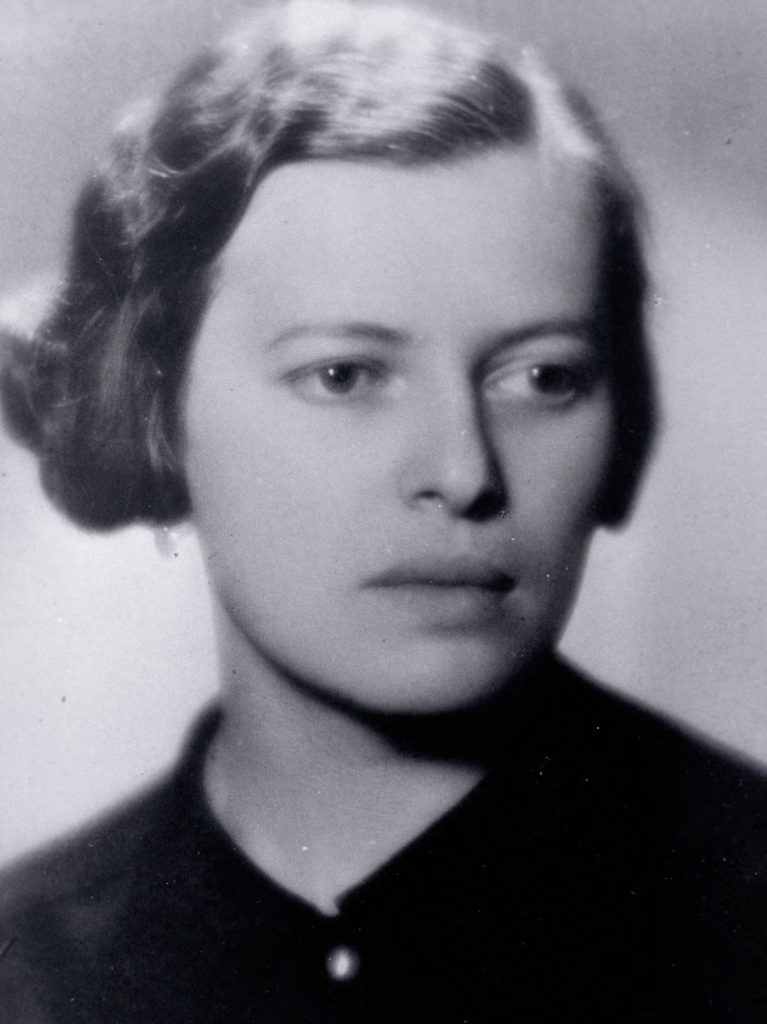
Left: Melanie Serbu. Prague, 1936. Photographer unknown. Photo: Leo Baeck Institute, F 3153
At the age of 19, Serbu worked as a bank clerk in Brasov. Inspired by a magazine article on Einstein’s theory of relativity, Serbu wrote the celebrated physicist for an explanation of his theory, mentioning that the topic had interested her since reading Poor Dionis, a novella by Romanian poet Mihai Eminescu (first published in 1872) about a daydreaming scholar who travels through time and space by inhabiting the bodies of reincarnated selves, touching on notions of spacetime and relativity long before the widespread association of such ideas with Einstein’s theories. Perhaps impressed by her boldness, Einstein replied by recommending a book introducing his theory: Die Idee der Relativitätstheorie (1921) by Hans Thirring:
“You have evidently got hold of one of those popularizations of the theory of relativity . . . . I took this from the fact that you believe that the quoted passage in the novel could have something to do with the theory. However, this cannot be understood without prior knowledge of physics. . . . I recommend reading a book on this subject that Prof. Thirring has published at the University of Vienna.” [Einstein to Serbu, 9 October 1928]
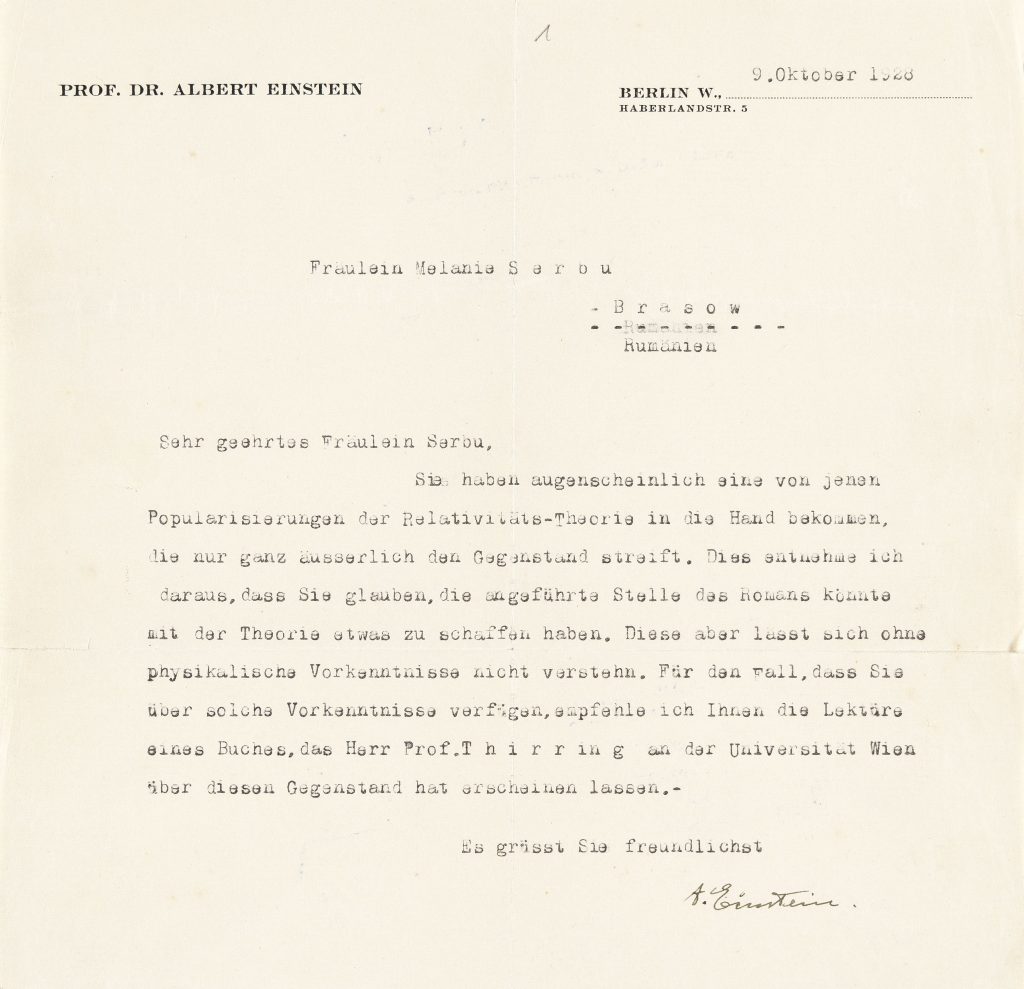
At auction October 26, 2023
After repeatedly reading Thirring’s book over the course of months, Serbu again wrote to Einstein, hoping to demonstrate her understanding of his theory, gesturing toward recognition of the importance of the relationship between electromagnetic and gravitational effects:
“[T]he universe is flooded by two forces like a fog: gravitational and light waves. Basically the same electromagnetic forces, only under different names because they exert different effects. Shouldn’t the two stand in a certain relationship to each other?” [Serbu to Einstein, probably 26 November 1928]
Soon after, Einstein replied, so astonished that someone as young and untrained could have such insight into recent physics that he was moved to help her pursue study in theoretical physics. Before he committed, however, he wanted reassurance, because part of Einstein’s surprise lay in the fact that it was a woman who commanded this insight:
“[T]his study almost always takes its toll on women, because the great and constant mental effort is usually not good for them. . . . [T]ry to study a suitable work on mathematics privately alongside your job, in order to test yourself. If you let me know the status of your education in this regard, I will send you a suitable work.” [Einstein to Serbu, 9 January 1929]
In the same letter, Einstein mentions how Serbu’s insight happens to touch on his own work in theoretical physics:
“I was extraordinarily surprised that you immediately saw the point where the next progress must begin, namely the unity of the natural forces. I’ve been working on this problem for 13 years and I think I’ve found the solution right now.”
Later that month, on January 30, 1929, Einstein’s paper proposing a unified field theory (“Zur einheitlichen Feldtheorie”) was published [in Sitzungsberichte der Preussischen Akademie der Wissenschaften, XXII, 1929]. Einstein believed he had found a single theory that models phenomena of both gravitation and electromagnetism, but by the summer of that year, the equations of the theory were shown to provide only an approximation of the phenomena [see G.C. McVittie’s “On Einstein’s Unified Field Theory” in Proceedings of the Royal Society of London 124, No. 794 (June 4 1929): 366-374]. Einstein continued to work on the problem, unsuccessfully, for the rest of his life.
Einstein seemed satisfied by Serbu’s continued expressions of interest and, as promised, Einstein sent books on mathematics and physics, which Serbu studied diligently in the evenings after her work at the bank.
On June 19, 1930, Einstein wrote to Nicolae Iorga—the historian mentioned above who had become Romania’s Minister of Education–requesting that Serbu be permitted to attend university after an appropriate examination despite legislation preventing anyone without a baccalaureate degree from doing so. In a move that permanently improved the educational opportunities for women in Romania, Iorga arranged for the relevant law to be changed, allowing students without a degree to audit university courses.
Serbu was not able to take advantage of a university education, however, even after having been given a study grant attached to Bucharest University by Romanian industrialist Nicolae Malaxa, because the date of the examination was set so early that it left insufficient time to prepare (her work at the bank occupied her for seven hours each weekday). Despite this setback, Serbu continued to study independently.
In January of 1935, Einstein wrote to his theoretical physicist friend Philipp Frank at the Deutsche Karl-Ferdinands-Universität in Prague, persuading him to allow Serbu to become his student there. Soon after, Malaxa agreed to transfer Serbu’s grant to the university in Prague.
At the end of 1935, Serbu had moved to Prague and begun her studies, but she was beset by difficulties Einstein had not anticipated, as she later recalled:
“The German-speaking students in Prague belonged to Henlein’s National Socialist party. Even those students who greeted me were forced by the others to refrain [from speaking to me]. When I sat down on a bench in the auditorium, the seats around me became empty. There were no Jewish colleagues in my semester at the time. I felt like a pariah . . . and asked myself what I might have done wrong.” [Serbu’s Remarks on Einstein’s letter of November 5, 1935]
Despite her initial troubles connecting with others in Prague, in the spring of 1937, a private tutor affiliated with the University had proposed marriage to Serbu; they considered the possibility of moving to America together. When Serbu wrote to Einstein to ask his advice, in his reply of May 7, 1937, Einstein delicately advised against marrying a non-Jew and dissuaded her from coming to America, since the employment opportunities were few, the mindset of the people was very different, and he had little free time to direct her education:
“With regard to the marriage proposal . . . , I cannot allow myself to judge. In and of itself, I believe that it is better for a woman to be married. If the man is not a Jew, marriage seems risky, especially under today’s conditions, since later on contradictions easily emerge that were originally concealed by the desire for a connection.” [Einstein to Serbu, 7 May 1937]
The primary reason Serbu wanted to travel to America was because of her increasingly uncomfortable encounters with anti-Semitism. Serbu nevertheless followed Einstein’s advice and concentrated upon her studies.
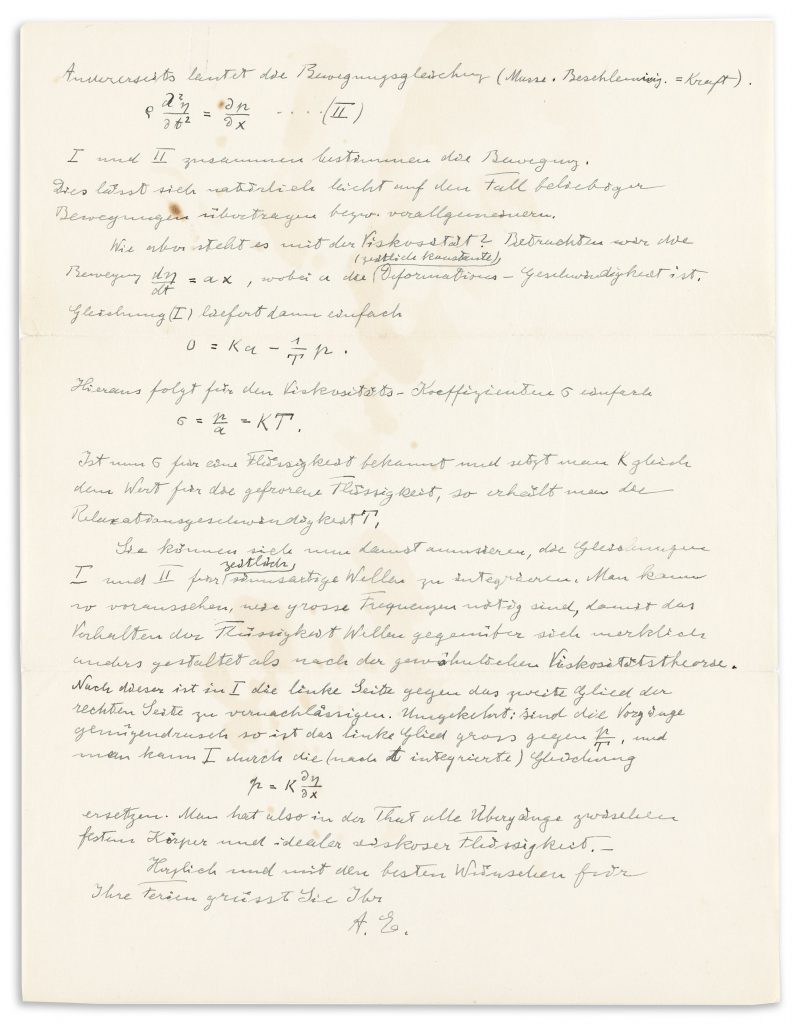
At auction October 26, 2023
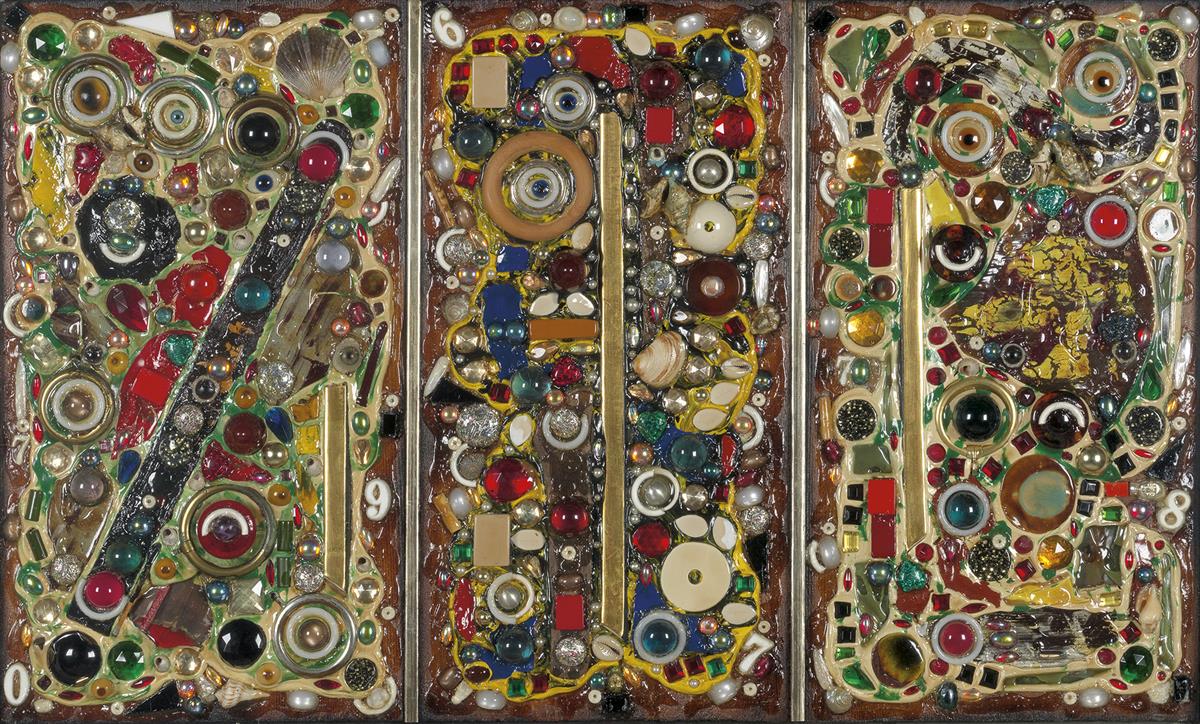
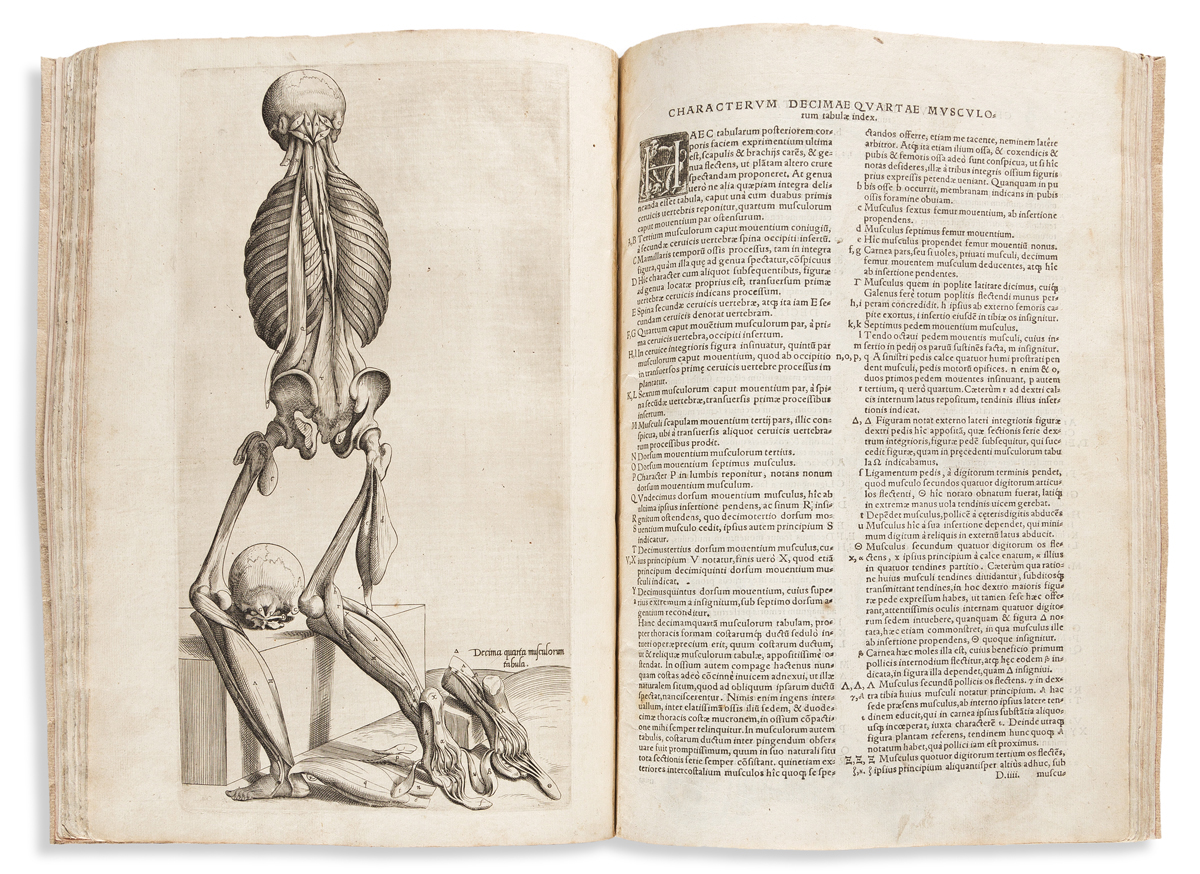




![Grace Meschery-McCormack shares about two copies of Fernando de Rojas’s ‘La Célestine,’ including a limited edition copy illustrated by Pablo Picasso.
At auction April 22. Learn more about the works at the link in our bio.
#Rarebooks #rarebookdealer #antiquarianbooks #auctions
_______________________________________
Music Credit:
Schubert - Piano Quintet in A major ‘The Trout’, D. 667 - IV. Andantino – Allegretto
Music provided by Classical Music Copyright Free on Youtube [https://tinyurl.com/visit-cmcf]
Watch: • Schubert - Piano Quintet in A major ‘...]](https://scontent-iad3-1.cdninstagram.com/v/t51.75761-15/491443494_18499096345036585_5935932878956098058_n.jpg?stp=dst-jpg_e35_tt6&_nc_cat=107&ccb=1-7&_nc_sid=18de74&_nc_ohc=Z9JEGkAXHREQ7kNvwGGUot6&_nc_oc=AdmJSnx8eY0WSW4ZCrMwPTmQIsTfafOSyYaXtUeWluHXKdvbxi2gWaQXyIMLUy6-JA4&_nc_zt=23&_nc_ht=scontent-iad3-1.cdninstagram.com&edm=AM6HXa8EAAAA&_nc_gid=q6boobyBxcAXa1wEr6CJOA&oh=00_AfEEkfEa4M7jycP-Zh8caWQb31pC3JZaO2ETE3TOM0grLQ&oe=68072051)











